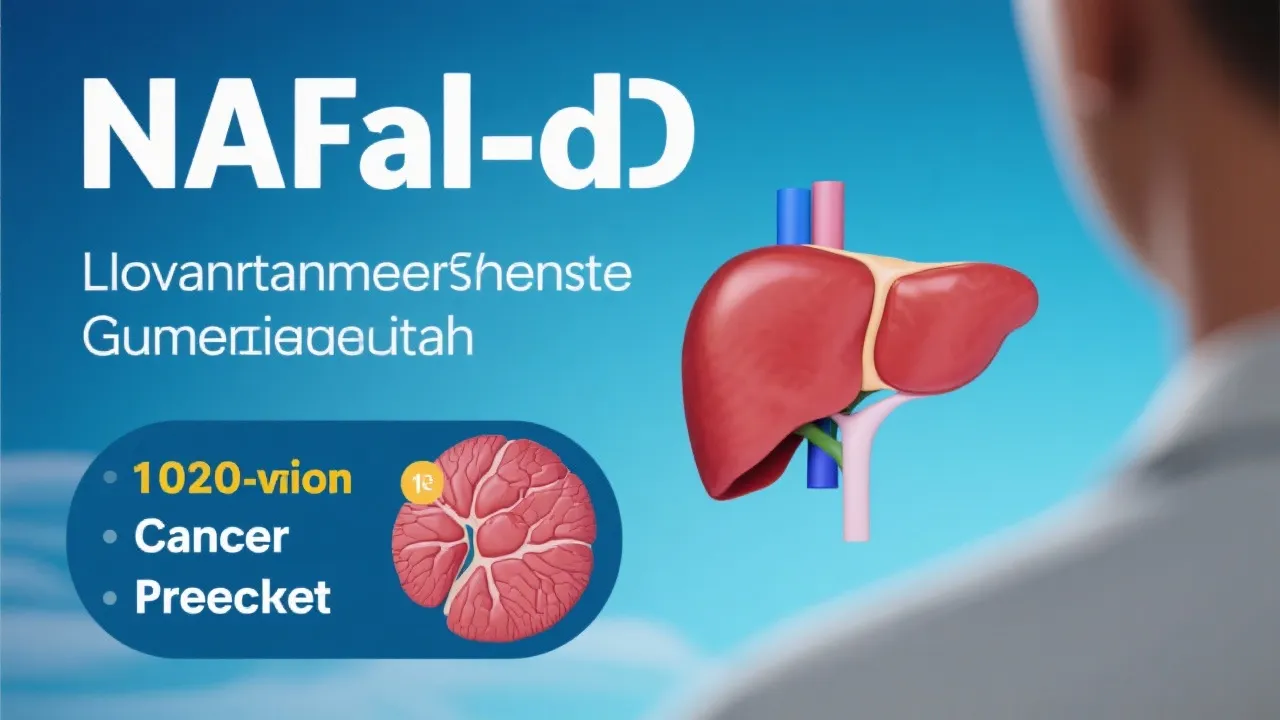Non-alcoholic fatty liver disease (NAFLD) has been increasingly recognized as a significant risk factor for hepatocellular carcinoma (HCC), a prevalent type of liver cancer. This article delves into the interplay between NAFLD and HCC, exploring the mechanisms, risk factors, and preventive measures. As NAFLD rises globally, understanding its impact on liver cancer incidence is crucial for healthcare advancements.

Non-alcoholic fatty liver disease (NAFLD) represents a spectrum of liver conditions, ranging from simple liver steatosis to non-alcoholic steatohepatitis (NASH), which can lead to cirrhosis and hepatocellular carcinoma (HCC). As NAFLD becomes more prevalent worldwide, largely due to lifestyle changes and rising obesity rates, it has become crucial to understand its implications on liver health, notably its role in the development of HCC.
NAFLD is characterized by excessive fat accumulation in liver cells, affecting individuals who consume little to no alcohol. As one of the most common liver disorders globally, its prevalence is rising at an alarming rate, paralleling surges in obesity and metabolic syndrome rates. The condition is more common in affluent societies, where poor dietary choices and sedentary lifestyles are prevalent. These factors lead to chronic inflammation and fibrosis, significantly increasing the risk of progression to HCC.
According to estimates from various health organizations, NAFLD affects approximately 25% of the global population, and this number is only projected to grow. This phenomenon is particularly concerning in developing countries, where western dietary habits are increasingly adopted. For instance, countries in Asia are experiencing a rapid rise in NAFLD rates, often attributed to significant lifestyle changes, including reduced physical activity and increased consumption of processed foods high in sugar and fats. The implications of this epidemic extend beyond just liver health, as NAFLD is also associated with various cardiovascular diseases and metabolic dysfunctions, which can further complicate patient outcomes.
The transition from NAFLD to HCC involves a combination of genetic predispositions, environmental factors, and metabolic abnormalities. Chronic inflammation caused by NASH is a pivotal factor, leading to DNA damage and oncogenic transformations in hepatocytes. Metabolic dysregulation invariably plays a role in disease progression; as insulin sensitivity decreases, the liver becomes less capable of managing fat deposition and inflammation. The accumulation of lipids contributes to cellular stress and disrupts hepatic cellular functions, accelerating the transition to NASH and liver fibrosis.
The pathological changes observed in the liver of patients with NASH include a recruitment of inflammatory cells, hepatocyte injury, and the activation of hepatic stellate cells leading to fibrosis. Studies have shown that hepatocyte apoptosis and the ensuing inflammatory response contribute significantly to the fibrogenic process. These processes are further exacerbated by insulin resistance, oxidative stress, and lipid peroxidation, which directly correlate with tumor cell proliferation and growth. Additionally, metabolic adaption of cancer cells often leads to a more aggressive form of the disease when HCC develops following NAFLD.
The risk factors for developing HCC in patients with NAFLD are multifaceted and often interconnected. Key elements include:
Preventing NAFLD-related HCC requires an integrated approach, focusing on lifestyle modifications and early detection through regular screenings. Suggested strategies include:
| Liver Disease | HCC Development Risk |
|---|---|
| NAFLD | Moderate, increasing with obesity and metabolic syndrome. |
| Hepatitis B and C | High, especially in chronic cases with liver cirrhosis. |
| Alcoholic Liver Disease | High, linked to chronic inflammation and cirrhosis. |
| Genetic Disorders (e.g., Hemochromatosis) | Varies; some genetic disorders significantly elevate risk and may necessitate targeted screening. |
| Liver Disease due to Autoimmunity | Moderate; certain autoimmune conditions may be linked to higher risks for HCC. |
As evidenced by its rising prevalence and associated complications, a comprehensive understanding of NAFLD and its potential progression to HCC is imperative. Given its extensive ties to lifestyle factors, proactive management through education, lifestyle changes, and regular screenings can significantly reduce the risk of severe liver disease and associated malignancies. Continued research into the pathogenesis of NAFLD and its transition to HCC promises to yield new avenues for prevention, diagnosis, and treatment, ultimately improving outcomes for countless individuals at risk.
Future research in the domain of NAFLD and HCC should prioritize understanding the underlying mechanisms that connect metabolic dysfunction to liver carcinogenesis. This includes identifying specific biomarkers for early detection and defining clear genetic signatures that predispose individuals to more aggressive forms of the disease. Advances in imaging technologies, such as elastography and contrast-enhanced imaging, may also herald a new era in non-invasive assessments of liver stiffness and fat content, providing valuable information without the need for liver biopsies.
Furthermore, the exploration of pharmacological interventions targeting inflammatory pathways, apoptosis, and metabolic pathways is essential. Clinical trials should evaluate the effectiveness of these new therapies across diverse populations, particularly given the varied presentations of NAFLD. Public health initiatives focusing on preventive measures, educating about healthy lifestyles, and managing chronic conditions like obesity and diabetes are imperative in curtailing this epidemic that is manifesting in both developed and developing nations.
As we look to the future, an interdisciplinary approach combining hepatology, nutrition, metabolic health, and public policy will be pivotal in addressing the complex and multifactorial challenge posed by NAFLD and its progression to HCC.
Explore the Tranquil Bliss of Idyllic Rural Retreats

Ultimate Countdown: The 20 Very Legendary Gaming Consoles Ever!

Affordable Full Mouth Dental Implants Near You

Discovering Springdale Estates

Embark on Effortless Adventures: Unveiling the Top in Adventures Made Easy Outdoor Equipment

Unlock the Full Potential of Your RAM 1500: Master the Art of Efficient Towing!

Dodge Ram: Redefining the Future of Full-Size Trucks with Unmatched Power and Innovation

Get New Phones Without Plans Easily

Smart Strategies to Slash Costs on Your Roof Replacement Endeavor
